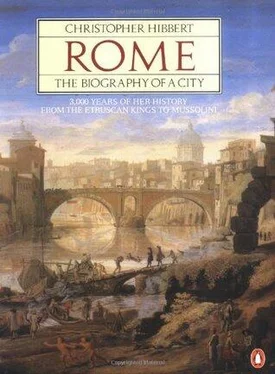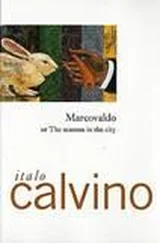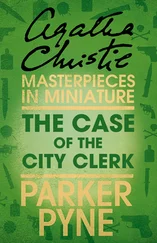Christopher Hibbert - Rome. The Biography of the City
Здесь есть возможность читать онлайн «Christopher Hibbert - Rome. The Biography of the City» весь текст электронной книги совершенно бесплатно (целиком полную версию без сокращений). В некоторых случаях можно слушать аудио, скачать через торрент в формате fb2 и присутствует краткое содержание. Жанр: Культурология, Искусство и Дизайн, на английском языке. Описание произведения, (предисловие) а так же отзывы посетителей доступны на портале библиотеки ЛибКат.
- Название:Rome. The Biography of the City
- Автор:
- Жанр:
- Год:неизвестен
- ISBN:нет данных
- Рейтинг книги:3 / 5. Голосов: 1
-
Избранное:Добавить в избранное
- Отзывы:
-
Ваша оценка:
- 60
- 1
- 2
- 3
- 4
- 5
Rome. The Biography of the City: краткое содержание, описание и аннотация
Предлагаем к чтению аннотацию, описание, краткое содержание или предисловие (зависит от того, что написал сам автор книги «Rome. The Biography of the City»). Если вы не нашли необходимую информацию о книге — напишите в комментариях, мы постараемся отыскать её.
Rome. The Biography of the City — читать онлайн бесплатно полную книгу (весь текст) целиком
Ниже представлен текст книги, разбитый по страницам. Система сохранения места последней прочитанной страницы, позволяет с удобством читать онлайн бесплатно книгу «Rome. The Biography of the City», без необходимости каждый раз заново искать на чём Вы остановились. Поставьте закладку, и сможете в любой момент перейти на страницу, на которой закончили чтение.
Интервал:
Закладка:
10. Originally built in the fifth century, the church of S. BIBIANA was restored in 1220 and again shortly before Bernini was commissioned to make a new façade in 1624. The statue of the saint inside the church was Bernini's first attempt both at a religious subject and a clothed, rather than a nude figure.
11. Carlo Maderno's façade for the church of S. SUSANNA, which is believed to stand upon the site of the saint's martyrdom, was completed in 1603. The original church, in the form of a basilica, was restored in 1475 and reduced to a single nave in 1595 when the coffered ceiling was gilded and painted. The statues of the prophets Isaiah and Jeremiah in the nave are by Valsoldo.
12. Through the efforts of a force of seven hundred labourers working at full stretch, the FAÇADE OF ST PETER'S was completed in 1612, with the exception of the statues on the balustrade. The nave was finished in 1615.
13. The erection of a large canopy over the Apostle's grave at the centre of the crossing of the newly completed basilica had been considered, and designs had actually been submitted, before Cardinal Maffeo Barberini became Pope in 1623. His election ensured that the commission would be given to Bernini who began work on it before 1624. The choice of giant bronze columns, twisted as were those of the canopy in the old church, was, it seems, suggested to Bernini, but in all other respects the design of the BALDACCHINO was his own. It was completed in 1633.
14. Bernini's STATUE OF LONGINUS, the name traditionally given to the soldier who pierced the side of Christ with a spear, was finished in 1638, although the models were prepared when the sculptor was still at work on the BALDACCHINO.
15. The TOMB OF POPE URBAN VIII, which Bernini completed in 1647, balances the earlier tomb of Pope Paul III, to the left of the CATTEDRA, by Giacomo della Porta.
16. The huge PALAZZO DORIA, whose main entrance is on the west side of the Corso, just north of Piazza Venezia, was owned by Cardinal Fazio Santorio who, when told on a visit by Julius II that the splendid palace was more suitable for a duke than a cardinal, felt compelled to make it over to the Pope's nephew, the Duke of Urbino. It subsequently passed into the hands of the Aldobrandini, then by marriage to the Pamphilj, then to the Genoese Doria. The picture gallery is open to the public. Bernini's bust of Innocent X which is on display here portrays the Pope with a much kindlier aspect than Velasquez's famous picture. The building is the work of many hands. The beautiful fifteenth-century courtyard, the older part of the building, has been attributed to Bramante. The rich, rather Rococo façade on the Corso is by the Roman architect Gabriele Valvassori and was completed about 1734; the 1740s’ Via del Plebiscito front is by Paolo Ameli, while Antonio del Grande designed the fine wings overlooking the Piazza del Collegio Romano, in the seventeenth century. A nineteenth-century façade completes the west side of the palace in the Via della Gatta.
17. Begun in 1625 on the site of an old Sforza palace by Carlo Maderno, assisted by Borromini, the PALAZZO BARBERINI was completed in 1633 by Bernini who was responsible for the entrance front. At that time it stood by itself in a large park and had more the appearance of a country villa than a town palazzo.
Some of the finest rooms of the palace are occupied by the art collection of the family, among which are Raphael's renowned portrait of La Fornarina and Titian's Venus and Adonis . There are also portraits of Erasmus by Quentin Massys and of Henry VIII by Holbein. In the main hall of the palace there is a frescoed ceiling depicting the Triumph of Divine Providence. It is by Pietro da Cortona and was painted between 1633 and 1639. The collection now belongs to the Italian State.
18. The PALAZZO PAMPHILJ, built to the design of Girolamo Rainaldi between 1644 and 1650, was given by Pope Innocent X to his sister-in-law, Olimpia Maidalchini. It was acquired after the Second World War by the Brazilian government for use as its embassy. The magnificent ceiling illustrating the story of Aeneas in Borromini's gallery is by Pietro da Cortona.
19. Completed in 1657 by Borromini and Carlo Rainaldi, the church of s. AGNESE was built on the supposed site of the saint's martyrdom. The monument to Innocent X is by G. B. Maini. The Pope, together with other members of his family, is buried in the crypt. In the vaults beneath the church are the remains of the foundations of Domitian's stadium.
20. Bernini's FOUNTAIN OF THE TRITON, commissioned by Pope Urban VIII in 1632, was finished in 1637. Triton, a merman of pre-Greek mythology, was usually represented as playing on a conch. By a brilliant combination of associated meanings Bernini has used this rather nebulous mythological figure to dominate what used to be called Piazza del Tritone and to compliment his patron. The Triton had been used as an emblem of immortality acquired through letters (Urban was a gifted Latin poet). Dolphins symbolized princely munificence (Urban was a great patron of the arts). Bees were types of divine providence (they were also the armorial decoration of the Barberini family). All are made use of in a personal allusion to the Pope. The nearby FOUNTAIN OF THE BEES, also by Bernini, was finished shortly before the twenty-first anniversary of Urban VIII's election.
21. Once considered the last work of Pietro Bernini, Gian Lorenzo's father, the BARCACCIA FOUNTAIN is now more usually attributed to the son. It was completed in 1629 almost a century before the SPANISH STEPS which now form such an elegant background to it. The fountain, for which the water of the Acqua Vergine had to be used with little pressure behind it, is ingeniously contrived to appear like a leaky boat with a cannon at either end and water seeping out of its prow and stern, in the process of sinking in a pool not much larger than itself. It is said that the idea was suggested by a boat which made a landing on the slope of the Pincian hill – where the Spanish Steps are now – during the greatest recorded flood of the Tiber which took place in 1598 when, on Christmas Day of that year, this part of Rome was submerged to a depth of between seventeen and twenty-five feet. ‘The sinking ship’ theme had, however, already been used for fountains by Carlo Maderno and it has also been suggested that the idea might have been inspired by the discovery of the sunken barges of Caligula in the Lake of Nemi, south of Rome, which were found in the pontificate of Eugenius IV (1431–47).
22. The PIAZZA DI SPAGNA takes its name from the Spanish Embassy which was established there in the seventeenth century and is still the Spanish Embassy to the Holy See. The building, by Antonio del Grande of Rome, was completed in 1647. Across the piazza beyond the BARCACCIA FOUNTAIN, up tie slope of the Pincian hill, rise the beautiful Scalinata della Trinità dei Monti or the SPANISH STEPS leading up to the piazza and Church of SS. Trinità dei Monti. The staircase was built by Francesco de Sanctis between 1723 and 1726 to designs by Alessandro Specchi. It contains 138 steps of travertine stone rising in three successive flights. The idea of building an ornamental staircase up this hill came from Cardinal Mazarin, the chief minister to Louis XIV in succession to Richelieu. His idea was to dignify the approach to the Church of SS. Trinità dei Monti which served the French community. Nevertheless, it was not until some sixty years after Mazarin's death, when the French ambassador, Etienne Guef-fier, left 24,000 scudi in his will for a chapel in the church and a stairway leading up to it, that the decision to build was taken with the approval of Pope Innocent XIII (1721–4). The church of SS. TRINITÀ DEI MONTI was founded by King Charles VIII of France. It was begun in 1502 in a French Gothic style but the façade was not completed until about 1570. The door and towers were finished in 1587. The steps were designed by Domenico Fontana for Sixtus V. The Spanish Steps became a favourite rendezvous for artists and their models, most of them cociari or peasants from the Campagna south of Rome. BABINGTON'S TEA-ROOMS near the foot of the Steps, one of the most popular meeting-places in Rome for foreigners and Italians alike, was founded by an English spinster, a descendant of Anthony Babington who had been hanged, drawn and quartered for leading a conspiracy against Queen Elizabeth I. Miss Babington arrived in Rome in 1893 with £100 and a friend, Miss Cargill, who was descended from as staunch a Protestant as Anthony Babington had been a committed Catholic, a man who had been executed for high treason in the reign of Charles II for denouncing the tyranny of the King. Sharing the yearning of many other English visitors to Rome for a good cup of tea, the two friends decided to open a tea-shop in Via dei Due Macelli. The following year they moved their shop to its present site. Miss Babington retired in 1928 and the business was carried on by her partner, by then Signora da Pozzo, and afterwards by Signora da Pozzo's daughter, Contessa Bedini, who fled to Switzerland when the Germans occupied Rome. Her staff kept the tea-rooms open, however, throughout the occupation. They still thrive.
Читать дальшеИнтервал:
Закладка:
Похожие книги на «Rome. The Biography of the City»
Представляем Вашему вниманию похожие книги на «Rome. The Biography of the City» списком для выбора. Мы отобрали схожую по названию и смыслу литературу в надежде предоставить читателям больше вариантов отыскать новые, интересные, ещё непрочитанные произведения.
Обсуждение, отзывы о книге «Rome. The Biography of the City» и просто собственные мнения читателей. Оставьте ваши комментарии, напишите, что Вы думаете о произведении, его смысле или главных героях. Укажите что конкретно понравилось, а что нет, и почему Вы так считаете.












